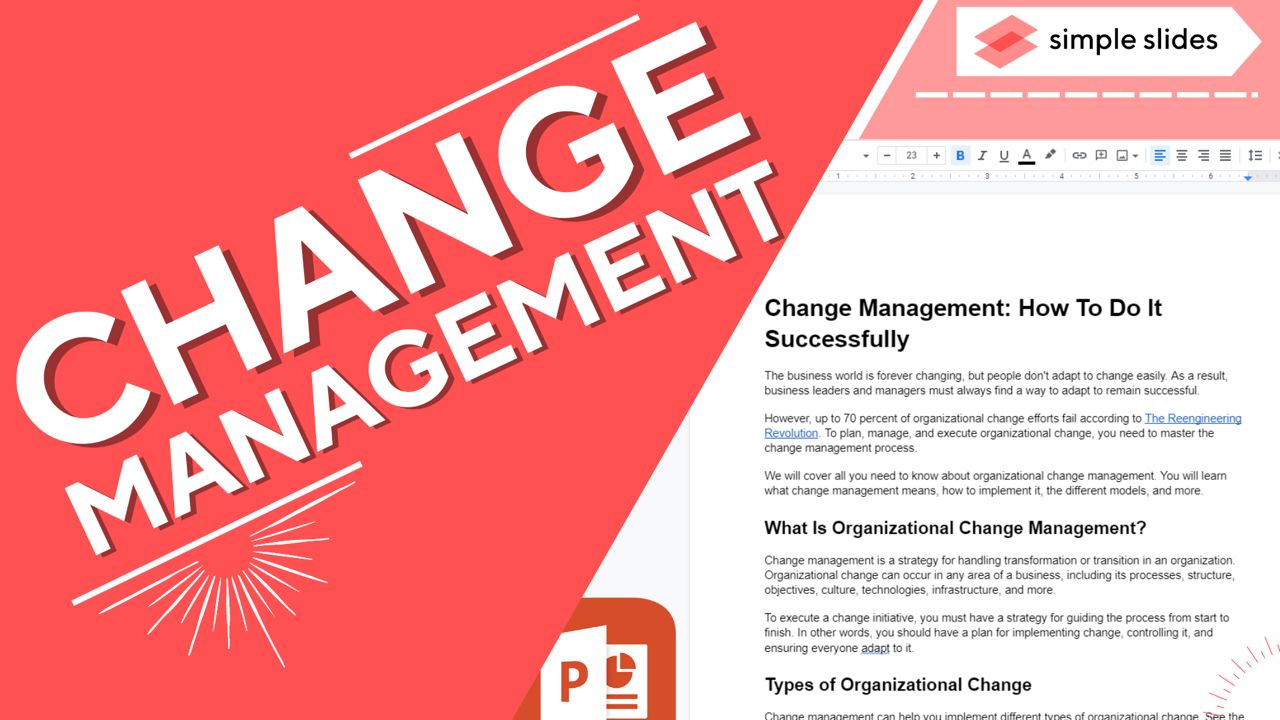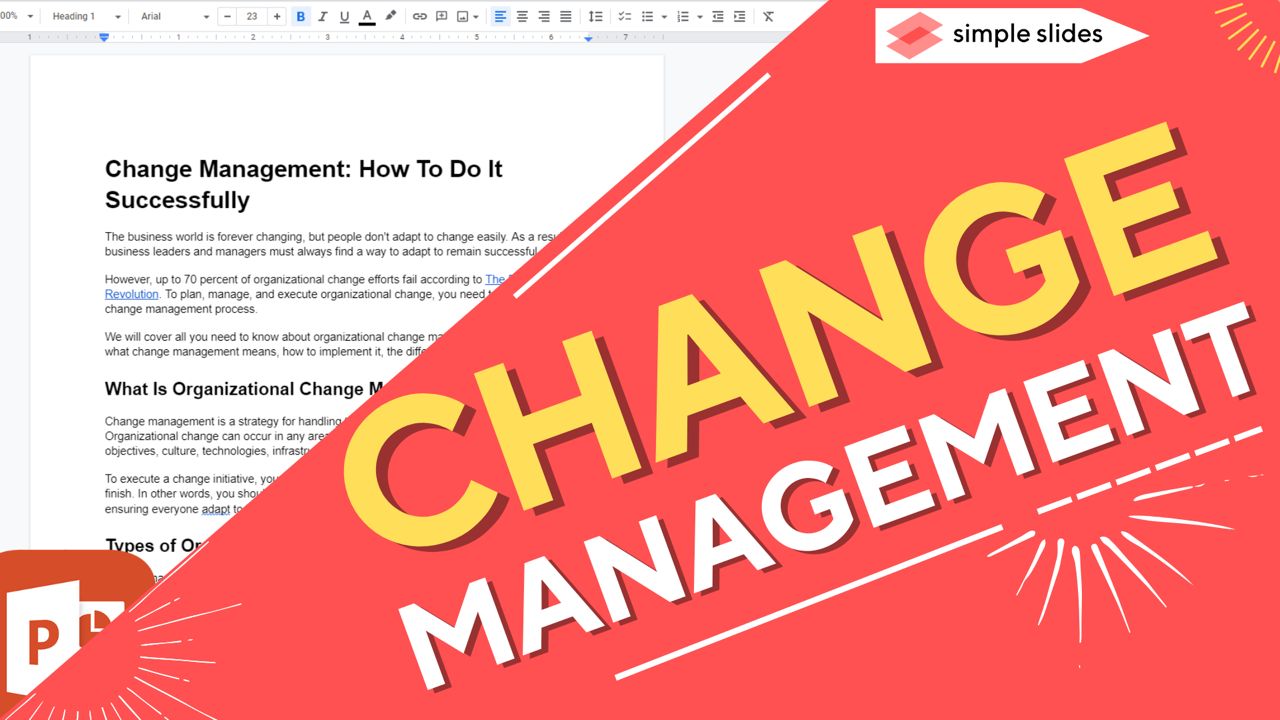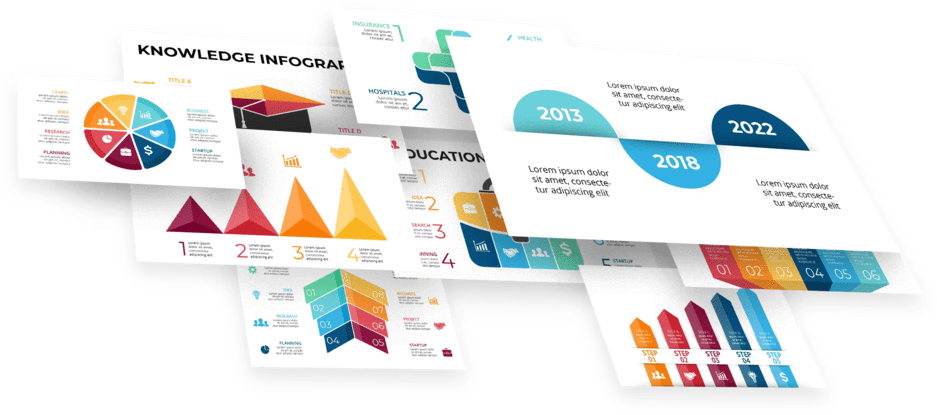Change Management: How To Do It Successfully
Oct 28, 2022
The business world is forever changing, but people don't adapt to change quickly. As a result, business leaders and managers must always find a way to adapt to remain successful.
However, according to The Reengineering Revolution, up to 70 percent of organizational change efforts fail. To plan, manage, and execute organizational change, you need to master the change management process.
We will cover all you need to know about organizational change management. You will learn what change management means, how to implement it, the different models, and more.
What Is Organizational Change Management?
Change management is a strategy for handling transformation or transition in an organization. Organizational change can occur in any business area, including its processes, structure, objectives, culture, technologies, infrastructure, etc.
To execute a change initiative, you must have a strategy for guiding the process from start to finish. In other words, you should have a plan for implementing change, controlling it, and ensuring everyone adapt.
Types of Organizational Change.
Change management can help you implement different types of organizational change. See the main types of organizational change below:
Strategic Transformational Change.
Strategic transformational change is a significant change that alters an organization's direction. Usually launched by senior executives, transformational change requires lots of time and adjustments to complete.
For instance, a company may change its mission statement or enter a new market.
Structural Change.
Structural changes are triggered mainly by mergers. It results in a company having a new hierarchy or administrative procedures.
Remedial Change.
As its name suggests, companies make remedial changes to fix existing issues. For instance, a company may need to alter its business process to turn its finances around.
People-Centric Change.
The people-centric change focuses on people, so you should handle it carefully. During this process, a company may alter employee roles and responsibilities, work from home, change parental leave policies, or make fresh hires.
The Importance of Change Management.
The failure to adapt to change creates problems for businesses and may even cause them to restart the process. Such situations can be costly.
Change management aims to help organizations go through transitions seamlessly. It provides more control and ensures that the key stakeholders understand what is happening around them.
How To Implement Change.
Create a change management plan before starting a transition. This plan will serve as a guide throughout the process. We have explained the essential steps in creating a change management plan.

Getting Set for Change.
To guarantee a seamless transition, you must ensure that everyone involved is notified before you get started. For this, you will need a change management proposal.
Your change management proposal should explain why the organization is transitioning. Mention the current challenges and the benefits the company will enjoy with the change. The importance of having the people's support at this stage can't be overemphasized.
Set Strategic Goals.
List the goals you want to achieve and the steps the organization must take to achieve them. Ensure that these goals are achievable. A SMART goal template will be beneficial here.
After setting your goals, you must add key performance indicators (KPIs). KPIs will help you track your progress toward your goals, so you will know once they are achieved.
Create Your Team.
Create a team that will help you implement the change. Decide who will execute and approve each task. Ensure that all team members understand their roles and responsibilities.
Develop a Communication Plan.
You will need a communication plan to keep all key stakeholders informed. An effective communication plan will ensure no one is in the dark about the changes.
Implement Change.
It is finally time to start the actual work. Start implementing whatever changes your organization requires.
Give your team as much support as possible during this process. You may also add milestones to provide more motivation.
Additionally, take extra steps to cement the changes you make. Employees tend to backslide into old methods and habits, especially regarding workflow and cultural changes.
Review the Results.
After completing the process, take some time to review the results of the process. Were you able to achieve your goals? Did the change have the desired results?
Review the results of the process to see if you succeeded or failed. Regardless of the outcome, you will have some things to learn.
The Best Change Management Models.
A change management model offers change managers a framework for successful change management. Different change management models are available for different transitions. So, ensure your chosen change management model suits your organization's situation.
ADKAR Model.
The ADKAR model is one of the most popular change management models. Introduced by Jeff Hiat, this model focuses on inhibiting an organization's resistance to change. ADKAR is an acronym for:
- Awareness
- Desire
- Knowledge
- Ability
- Reinforcement
McKinsey 7-s Model.
The McKinsey 7-s model points to seven elements needed for successful change management. The 7s include:
- Strategy
- Systems
- Structure
- Staff
- Skill
- Style
- Shared values

Kotter's 8-Step Model.
The Kotter model is a framework for change leadership. It breaks the process into eight steps, they include:
- Create urgency
- Choose your team
- Develop a strategic vision for change
- Communicate the vision
- Remove barriers
- Set short-term goals
- Maintain the momentum
- Cement the change
Lewin's Model.
Lewin's model is a simple change management model. It consists of three steps that include unfreezing, changing, and refreezing.
Bridges Transition Model.
William Bridges designed this change management model based on people's responses to change. The three stages of the Bridges' transition model include Ending What Currently Is, The Neutral Zone, and The New Beginning.
Advantages of Change Management.
Change management allows managers to take a structured approach to the change process. Here are some advantages of taking change management seriously:
- It helps organizations adapt to change faster
- It improves communication
- It boosts employee morale
- It limits internal resistance to change
- It helps companies to develop strategies that can be used for future transformation projects
- It enables companies to pursue and track their transition goals
Challenges Facing Change Management.
Change management programs fail for several reasons. Recognizing these pitfalls will help you avoid them during your transition:
- Internal resistance
- Poor resource management
- Poor communication
- Absence of trackable goals
- Lack of required skills
- Absence of a people-oriented strategy
Download a Change Management Template.
You can make your change projects much simpler with a change management template. We have designed our change management templates to help you quickly implement and present organizational change.
Frequently Asked Questions:
What is organizational change management?
Organizational change management is the way a company handles change initiatives. A change management strategy ensures successful implementation, control, and adaptation.
What are the four types of organizational change?
The four types of organizational change are strategic transformational change, remedial change, people-centric change, and structural change.
What are examples of change management models?
Examples of change management models include the ADKAR model, McKinsey 7-s model, and Lewin's model.
Related Articles:
Get A Free Sample of Our Award-Winning PowerPoint Templates + University
Get A Free Sample of Our Award-Winning PowerPoint Templates + University
Join our mailing list to receive the latest news and updates from our team.
Don't worry, your information will not be shared.
We hate SPAM. We will never sell your information, for any reason.





